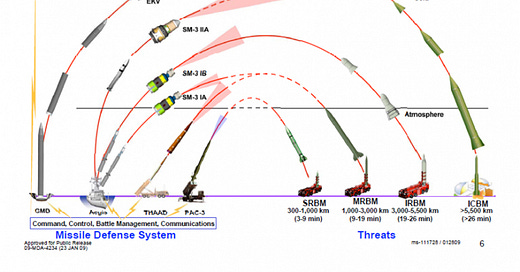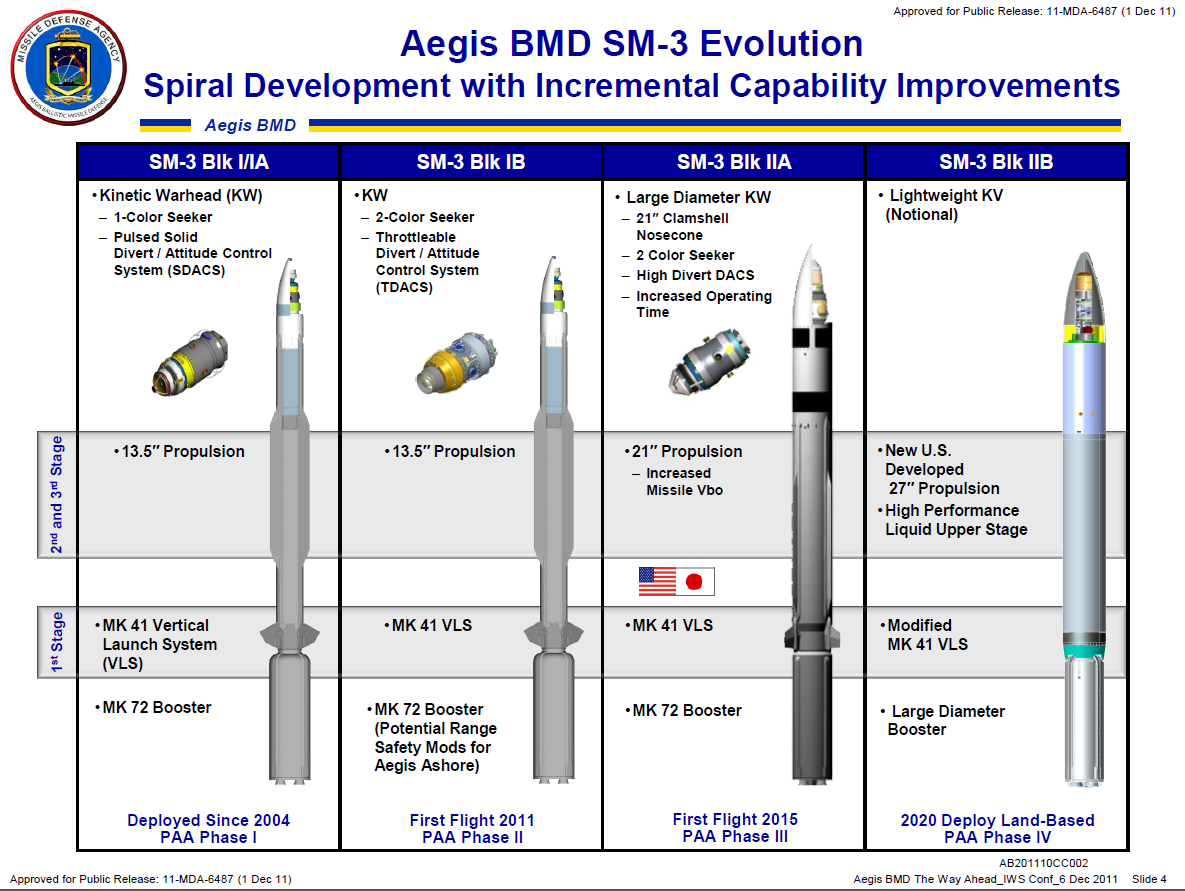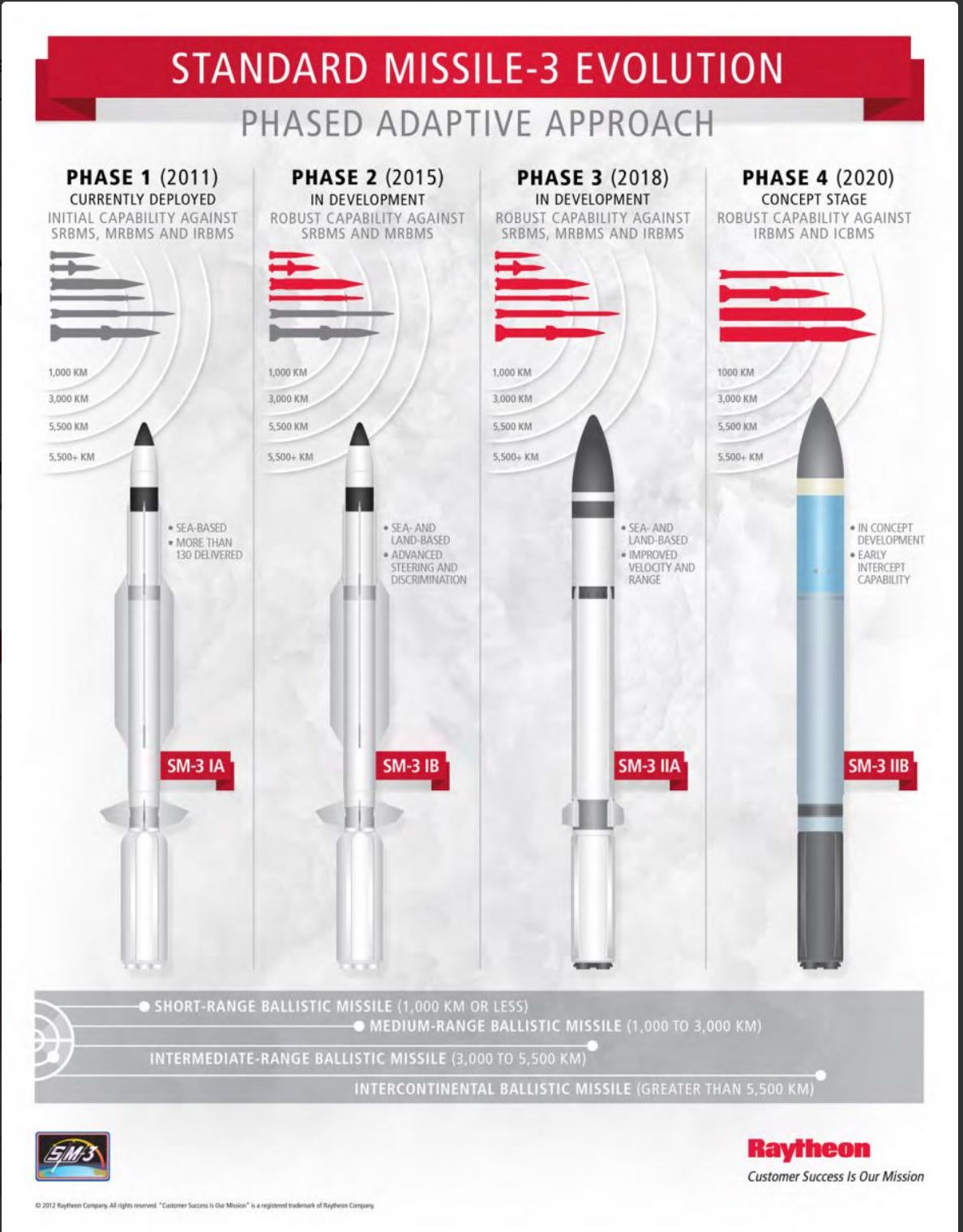One of the things that came up in yesterday’s Midrats was the intersection of a couple of bits of OSINT that, if correct on my part, is just another blinking red light warning that we are not equipping ourselves for a serious conflict west of the International Date Line.
First of all, let’s define the problem and then dive into the two bits of OSINT and what is tells us.
The use of ballistic missiles by Iran twice this year to attack Israel and their ongoing use by proxies against, well, everyone, is not a “surprise.” This has been known for a long time. Same as China’s ballistic missiles—both land attack and anti-ship—these too are not new, and their numbers are huge. Any military move by the US Navy west of the international date line will face thousands of conventionally armed ballistic missiles in addition to anti-ship cruised missiles, aircraft and submarines. Of all the challenges, the ballistic missiles are the hardest.
If the target is a static land facility or a warship on the high seas, as always, it isn’t so much the missile that is what is worrisome (nor the warhead unless it glows): no, it is the missile guidance that has always been the concern. With each passing year and improvement, the threat ratchets up, and the CEP gets smaller. As the threat quality and quantity increases, so must the manner in which we have to defeat them.
That’s the problem.
The solution?
Well, here’s OSINT thread one.
To start with, our most flexible and capable anti-ballistic missile (ABM) system is the Aegis enabled SM-3 family. Some versions of the SM-2 and the SM-6 have some ballistic missile capability, but nothing like SM-3 or even the Army’s THAAD that we’ll get to in a bit.
If we are facing a few thousand Chinese ballistic missiles from Guam going west, how are we going to defend our ships and shore facilities?
SM-3, that’s how.
If you look at the FY2025 Budget Request, you have an idea how many SM-3 we are purchasing, according to Business Insider,
…the US will only produce 12 SM-3 Block IIA annually over the next five years, half of what was procured in FY2023 and a drop from previous years.
I am sure, and I hope, that there is something going on best discussed in the SCIF that mitigates this, but numbers are numbers. Thoughts, prayers, and PPT programs can’t intercept DF-26.
After the first round of attacks in May, SECNAV Del Toro has been beating the drum that we need more.
After seeing how well Standard Missile-3 (SM-3) anti-ballistic missile interceptors performed last month against Israel-bound Iranian ballistic missiles the Navy Secretary says he now wants more. Carlos Del Toro’s testimony at Wednesday’s Congressional budget hearing comes as the Pentagon’s Missile Defense Agency (MDA) wants to end procurement of SM-3 Block IB variants by the end of this year and limit its buy of the follow-on Block IIAs to 12 per year through Fiscal Year 2029.
“I truly believe that the SM-3s will be needed in greater numbers in the future, given the operations that took place in defense of Israel,” Del Toro testified during a House Armed Services subcommittee hearing. “Recently, some were fired. And very effectively. So I think given the future threat and our deterrence mission of the Indo-Pacific, we are going to need more SM-3s in the future.”
Look at the difference between the IB and IIA missiles in the graphic at the top of the post and then the budget numbers above.
This graphic from Raytheon is a bit dated, but still helpful in knowing what they bring to the table:
Now the explainer, back to Howard Altman at The War Zone:
SM-3 series interceptors…can engage ballistic missiles outside of the Earth’s atmosphere during the mid-course portion of their flight. SM-3s are hit-to-kill weapons that release a “kill vehicle” in the final stages of an intercept that then physically manuevers to smash into the target. SM-3s have demonstrated their capabilities against various tiers of ballistic missiles in testing, including intercontinental ballistic missiles (ICBMs), and one was also used to destroy an out-of-control U.S. spy satellite in 2008.
We don’t know the exact number and type of SM-3 that were fired earlier this month in addition to those fired in April, but a lot of sources are reporting the it is in excess of our annual production.
We also need to remember that we have dozens of DDG and a few CG out there who need those missiles.
An Arleigh Burke DDG has 90 or 96 VLS cells. Depending on what they think they will face, they will have a mix of SM-2, SM-3, SM-6, ESSM, and ASROC.
Though we are trying, we cannot reload VLS at sea yet, so once you are Winchester on the missile you need for the threat at hand, you are little more than a show-pony.
Don’t forget, we have other ships and other missions that need what few SM-3 out there.
The threat to Israel isn’t going away any time soon. Iran has hundreds more ballistic missiles ready to go.
Yesterday, we found out what the second OSINT thread was:
At the direction of the President, Secretary Austin authorized the deployment of a Terminal High-Altitude Area Defense (THAAD) battery and associated crew of U.S. military personnel to Israel to help bolster Israel's air defenses following Iran's unprecedented attacks against Israel on April 13 and again on October 1. The THAAD Battery will augment Israel's integrated air defense system. This action underscores the United States' ironclad commitment to the defense of Israel, and to defend Americans in Israel, from any further ballistic missile attacks by Iran. It is part of the broader adjustments the U.S. military has made in recent months, to support the defense of Israel and protect Americans from attacks by Iran and Iranian-aligned militias.
You can see THAAD capabilities relative to SM-3 above. CNN has some more detail on the deployment.
According to a report by the Congressional Research Service, the US military has seven THAAD batteries, each consisting of six truck-mounted launchers – with eight interceptors apiece – a powerful radar system and a fire control and communications component.
One of those prized batteries is now being dispatched to Israel …
The US Army will dispatch about 100 troops to Israel to operate the battery, according to the Pentagon. Iran has informed the US it would retaliate against any new attack by Israel, a source in Tehran told CNN on Saturday.
Yes, we only have 7. They cost $1.25 billion per battery and $12.6 million per missile. From a capability point of view, they are A LOT more expensive than a Navy solution, plus we now have US Army soldiers engaged in a combat role feet-dry ashore in Israel.
A THAAD battery consists six launchers, each with eight missiles. That gives you 48 missiles. A little more than half a DDG’s worth of VLS cells. I’ll let you multiply 48x7.
Compared to having a couple of DDG off the coast, having US Army forces as active participants on the ground is an escalation in our participation in helping Israel defend herself. It does not matter if you think that is a good thing or a bad thing, but it is reality. It narrows options and increases risks. Ground forces have a very different vibe than capabilities at sea.
I would presume own supply of Arrow ABM must be running thin. Deploying THAAD could not have been an easy decision for Israel or the USA. This isn’t an exercise, this is varsity football.
With only seven batteries available and the world generally in disarray, the only reason I can think of that would justify this move is simply that the US Navy just can’t bring enough DDG with SM-3 off Israel to do the job. We’ve shot what we’ve got…at least for a bit. What few we have are located elsewhere with missions of their own.
This is where Congress and policy makers come into play.
Here’s the job that isn’t being done. Back up a bit and think about what we have, today, for 2027, to face what is waiting for us west of the International Date Line.
How many years of production of SM-3 would we expend in the first 24-96 hours? What will be left at D+7? D+15? How do we distribute these between our ships? If we have a DDG that is loaded for a TLAM mission that needs to replace a DDG that is Winchester while doing a AMB mission, how long will that take? Where will it take place? Is there a primary, backup, and ready spare capability in theater?
Where will we put our six THAAD batteries if the seventh is in Israel? How many of those six can/should we base west of the International Date Line?
Is there a plan to drastically increase production of the SM-3 IIA? Can we drastically increase production, not just for us, but for our allies who want them too?
None of this is new. Back in 2020, as we discussed on the OG Blog, we were given plenty of warnings that the long neglected air defense community in the US Army was under-resourced. The US Navy can only do what budget it has.
As I mentioned in the blog post linked to above,
"High demand - low density" is just a PPT way of saying we didn't buy enough of what we actually need.
All this begs the question, “What are we actually preparing for?” Are we really ready for the next Great Pacific War? How are we going to fight at D+90 when all the sexy stuff was sent down-range? What will we fill all those VLS cells with?
No training time outs in war.
UPDATE:
What does an explainer sound like of the above post? Click here.








A production rate of 12 per year is crafting, not industrial production.
“Lovingly hand crafted from artisanal aluminum, free trade copper wiring, and boutique semiconductors, these pieces of art are the perfect addition to the discriminating collector’s modern art display…”
My understanding is that we have an almost unlimited supply of DEI manuals.
Our almost unlimited supply of HR reps can throw those manuals at the enemy.